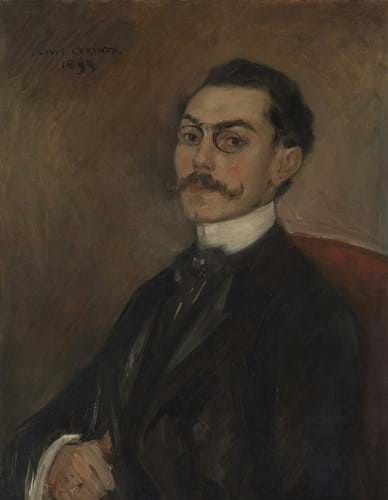The painting is the first item under the Acceptance in Lieu Scheme to have been allocated to more than one museum or collection. It will initially be displayed at the Barber Institute of Fine Arts, University of Birmingham.
Dr Gabriele Finaldi, director of the National Gallery, London, said: “The Barber Institute of Fine Arts and the National Gallery already share a portrait by Van Dyck of the artist's friend François Langlois and now we jointly own Corinth's portrait of his friend Dr Mainzer. Once again the Acceptance in Lieu scheme has brought a fascinating work of art into public ownership and we are very grateful.”
Solf Circle
The portrait of Dr Ferdinand Mainzer (1871–1943), a German-Jewish gynaecologist, historian and writer, and a key cultural figure of early 20th-century Berlin, was painted by Corinth in 1899.
The artist and sitter were to become great friends but, in the 1930s, Mainzer became active in the Solf Circle, a Roman Catholic group which, at considerable danger to themselves, fiercely opposed Hitler and the Nazi regime. Mainzer and his family fled Berlin to England with the help of Circle members, as the SS closed in. Betrayed by a Gestapo infiltrator, most of the remaining members of the Circle were executed in 1944.
Mainzer and his wife later moved to Los Angeles and were part of a German-speaking community that included Theodor Adorno, Thomas Mann, Max Reinhardt and Arnold Schoenberg. Mainzer died in exile there in 1943.
His granddaughter, Gisela Stone, settled in London, eventually bringing the portrait to her home, where it hung until her death in 2016. The picture was acquired via the Accepted in Lieu Scheme, run by the government, in lieu of Inheritance Tax from the estates of Evan and Gisela Stone, settling £87,600 of tax.
Secession movements
Corinth is unrepresented in the National Gallery’s collection and the only comparable work by the artist in the UK is the Portrait of Carl Ludwig Elias, Age 7 ¼ in the Leicester Museum and Art Gallery, also painted in Berlin in 1899.
Along with Klimt’s Portrait of Hermine Gallia of 1904 in the National Gallery’s collection this acquisition shows the influence on modern art of the Secession movements in Berlin and Vienna.






